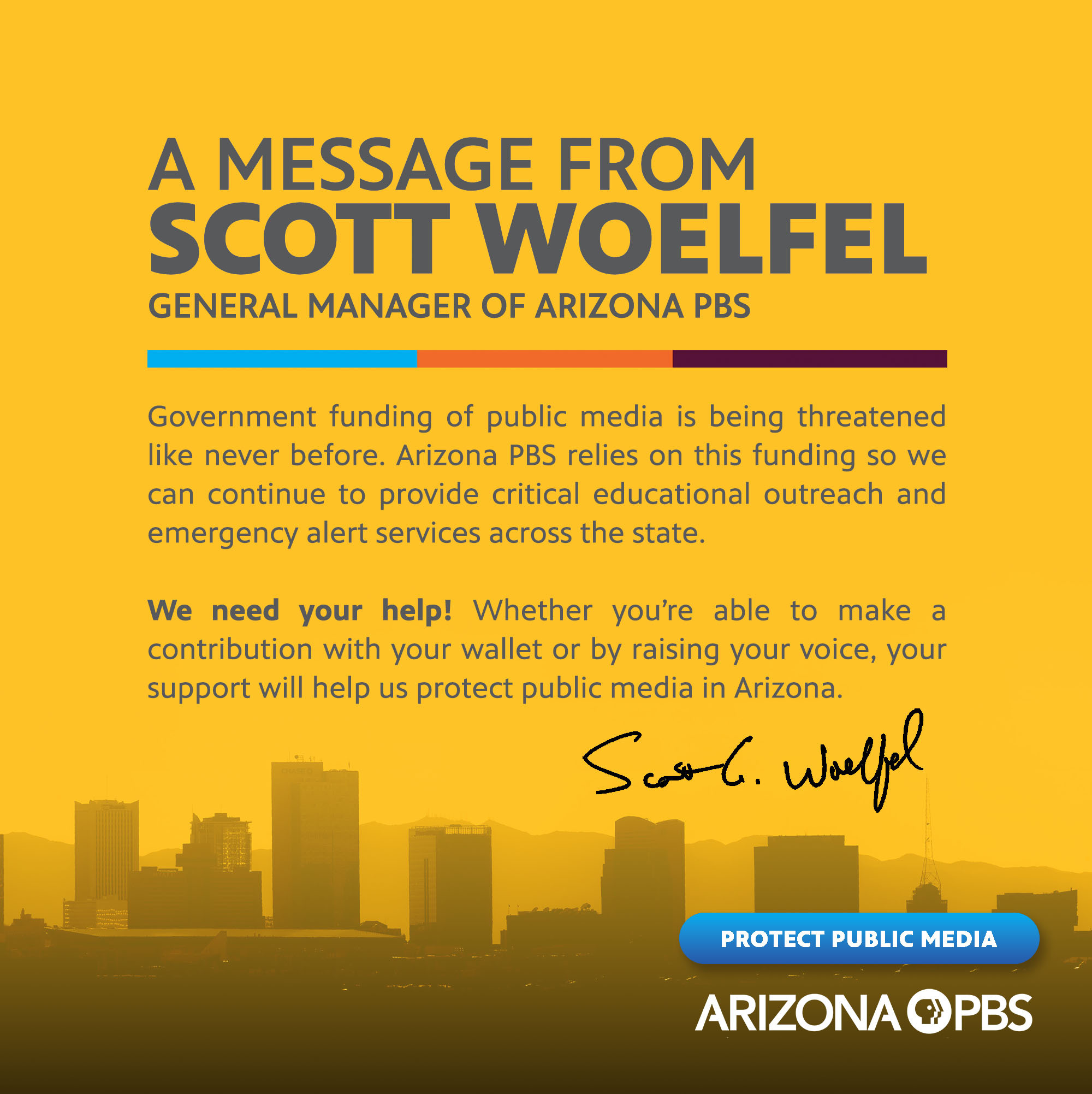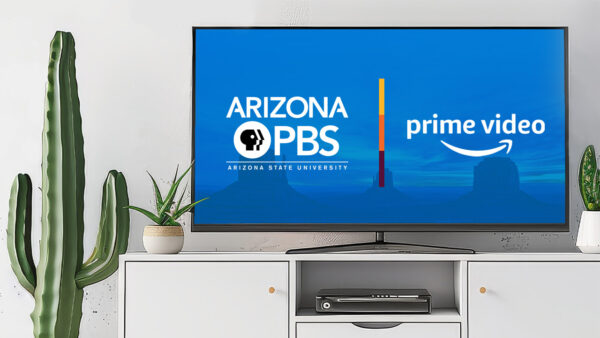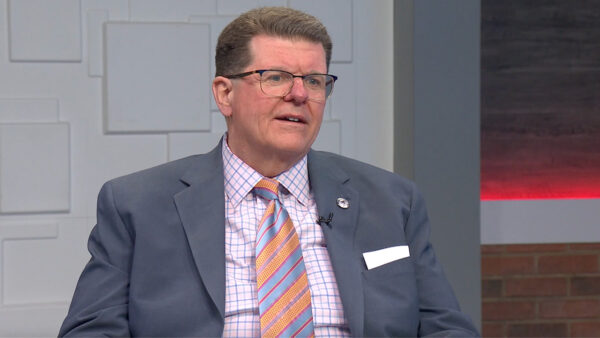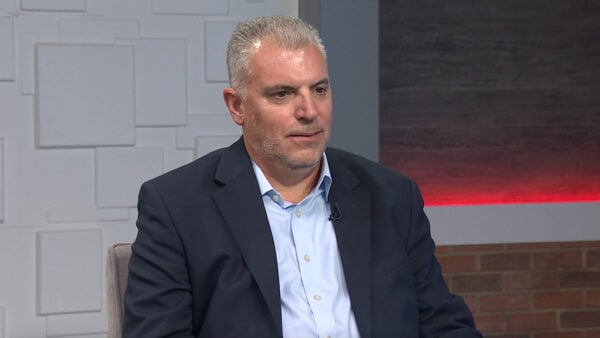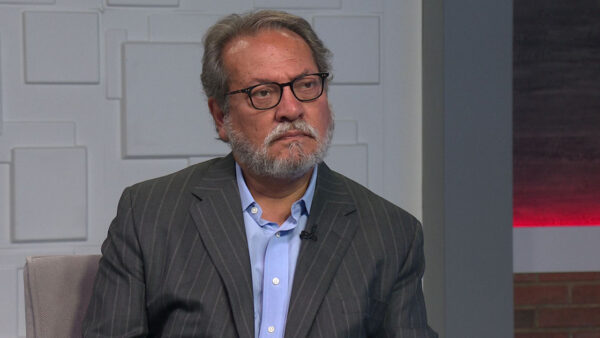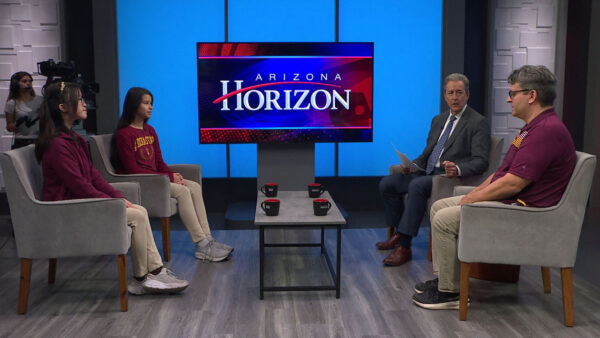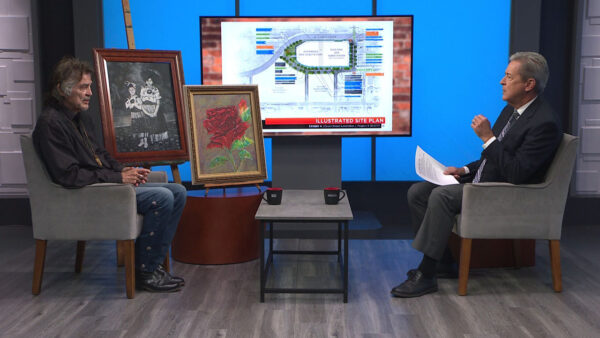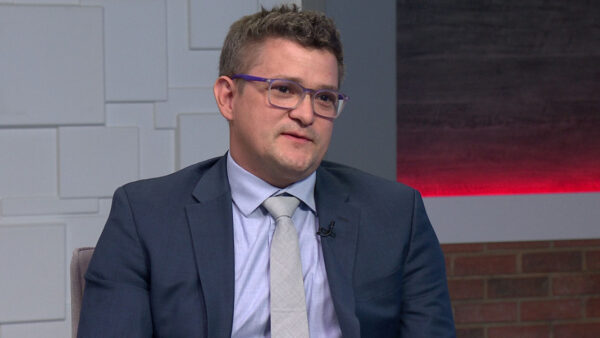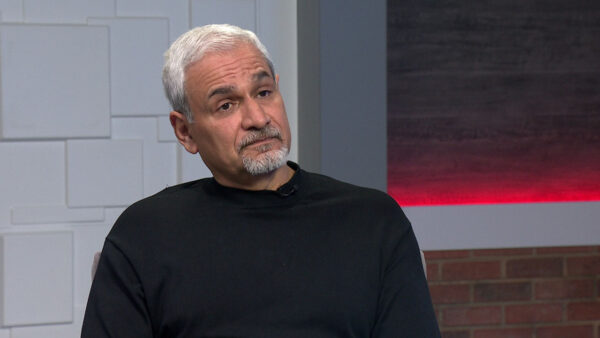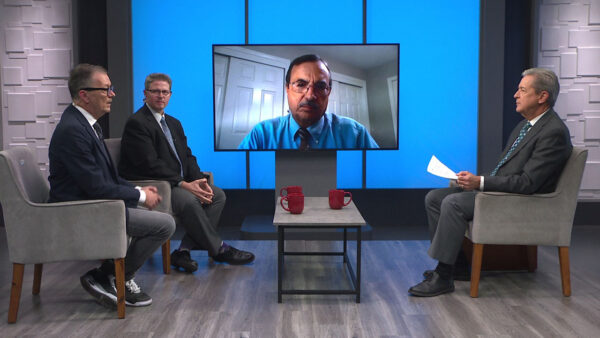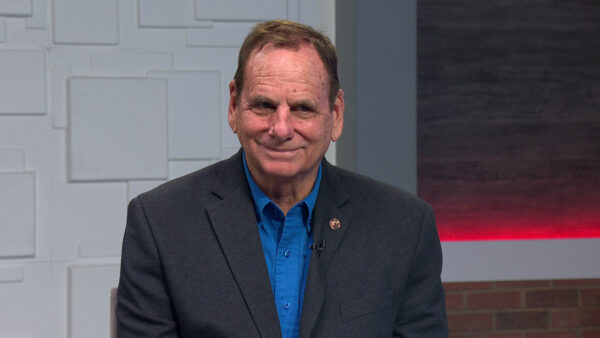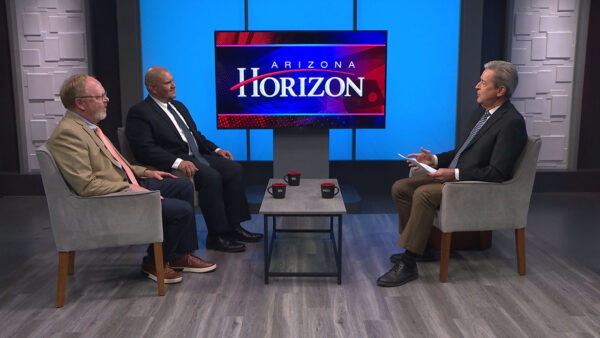The state legislature cut funding to help parents pay for day care and also imposed a shorter length of time families can receive state assistance. Dana Wolfe Naimark, president and CEO of the Children’s Action Alliance, and Samuel Richard, coordinator and executive director of Protecting Arizona’s Family Coalition, will discuss how children fared in this legislative session.
Ted Simons: Good evening and welcome to "Arizona Horizon." I'm Ted Simons. A three-judge panel of the Ninth Circuit Court of Appeals today upheld most of a lower court judge's ruling on racial profiling by the Maricopa County sheriff's office. The panel upheld a ruling that Sheriff Joe Arpaio's deputies racially profiled Latinos during regular and so-called saturation stops. The ninth did side with Arpaio in one respect. The panel ruled that a court-appointed monitor could oversee internal investigations but only those dealing with constitutional issues. Today's decision comes one week before a civil contempt hearing involving Arpaio and a number of his top aides.
Ted Simons: Advocates for children's issues say that there wasn't much to celebrate during the recent legislative session. Here now to talk about it is President and CEO of the Children Action Alliance Dana Naimark and Sam Richard, Coordinator and Executive Director of Protecting Arizona's Family Coalition. Overall, thoughts on the legislative session?
Dana Naimark: It was chilling. It was a scary session for kids. I know Governor Ducey uses the word opportunity to describe the session. Two words come to my mind when I think about it for children: Neglect and unbalanced. And those are both very scary for our future.
Ted Simons: Talk to me about what you saw from the session.
Samuel Richard: I think we saw a legislative session that in many ways was tone deaf in my opinion. In one way, we saw the legislature prioritize tax cuts for the most cash-rich corporation in the world and prioritized those tax cuts over TANF we have the lowest time limit eligibility of temporary assistance to needy families in the nation at 12 months, 38 states are at 60 months or five years. So we really saw what the legislative priorities were and children and family were not among those.
Ted Simons: Talk about that program and again, what the time limit was before, what it is now, why it changed.
Dana Naimark: So this is assistance for the poorest mothers and children in our state. And they cut the time in half and that time is needed for moms to get back on track, get on their feet, get into the workforce, get ready and the whole point of cash assistance is to keep kids out of crisis while moms are doing that. A year is not long enough for their lifetime. Sometimes, people get back on track, and then they have trouble again and they need some help again. A year, we're the only state in the country with that little of a time limit.
Ted Simons: Low-income family childcare vouchers also cut? Talk to us about that.
Dana Naimark: That was very discouraging. We went backwards and we've had a year-long conversation with our community about child abuse and neglect and about the need to prevent crisis, so fewer cases come into our overwhelmed system and there was a recognition last year that having safe and affordable childcare is a key part of that prevention. This year, they zeroed out the state funding for childcare vouchers and we went backwards. The waiting list is already growing. There's more than 2,000 kids on the waiting list and we know that that and other budget cuts will actually drive up child neglect. When our politicians are telling us they want to reduce neglect but their votes are in the opposite direction.
Ted Simons: What are your hearing from lawmakers, from folks regarding preventive measures like these?
Samuel Richard: Well, we know that some lawmakers know that an ounce of prevention is worth a pound of cure and a 16-1 ROI is a great return, whether you're a taxpayer or a former businessman, you can see value in that kind of ROI and that's a growing narrative among many lawmakers seeing the value of preventive services, both at DCS and across other departments.
Ted Simons: That return on investment is not convincing enough lawmakers. Why not?
Samuel Richard: It's a tougher sell because the results aren't here tomorrow. They're there next week, next month, proverbially, so, you know, the sell is a little harder but it's one that's worth fighting for.
Ted Simons: A department of child safety, this new department, that budget was cut, too wasn't it?
Dana Naimark: It was, very surprising, they took away funding for the back log. Even though the back log is higher than it was before, it just doesn't make any sense.
Ted Simons: Foster care programs as well, talk to us about those because I think you can get into a labyrinth with all these programs and all these attempts to help with these kids. It seems like foster care needs, they're growing. What's happening at the legislature?
Dana Naimark: Right, so we have more than 17 thousand children in foster care, it is way too high, we need to bring it down. But in the meantime we need to support those foster families and those children and they underfunded the budget for foster care, sort of assuming that the population will drop, but they have no plans in place to make it drop.
Ted Simons: Money for adoption and guardianship, was that cut, was it kept the same?
Dana Naimark: Again they didn't fund the dollars needed for the growing numbers of kids, so they were skimping, they were just saying we're going to have a flat budget even though we don't have a flat need in our community.
Samuel Richard: And Ted outside of the specifics I will tell you that we were very concerned about the pace of the budget in addition to the specifics in there from introduction of the budget package to passage was roughly about 72 hours, so there wasn't a lot of time for lawmakers to really unpack what was in there whether they were good programs or bad programs, 72 hours did not really provide a lot of room for the conversation to happen.
Ted Simons: And yet we have leadership on the show every month and they said basically the governor's budget was out there for weeks on end, everyone saw it and talked about it and they didn't change much to it at all. They say there was no rush.
Samuel Richard: The framework of the budget was there, but many of the details were missing up until hours or in some cases minutes before they were voted on and that is just inexcusable.
Ted Simons: Education and core student funding, explain again why we hear lawmakers and the governor saying that education was not cut and yet per student funding, core funding looks like it might be cut.
Samuel Richard: Yes in many ways there's different ways to look at it and talk about it but the only way to really say that education wasn't cut was to explain it in a way of sort of counting gimmicks or sort of a shell game. Dollars from the classroom were cut and not only from the classroom, but in those outside of classroom dollars, those affect inside the classroom experiences. Hungry kids can't learn, kids that aren't supported by behavioral psychologists or other outside of class support services are unable to really give their full attention to learning inside the classroom.
Ted Simons: What is student success funding, and what happened to it?
Dana Naimark: Now I know you've been asking that in a lot of your shows and nobody has an answer because nobody knows and it's all up on the ninth floor being developed. We don't know what the new student achievement district will be. The money that they cut was a prior performance funding that was classroom money that they took out of the classroom to put into this pool for we don't know what yet.
Ted Simons: As far as technical education, schools, those kinds of things, they didn't escape, either, did they?
Dana Naimark: Right and that was one of those surprise cuts that came up in the last two days, cuts to technical education, cuts to schools where their population is declining. Those were brand new ideas that emerged in the last couple of days before the vote.
Ted Simons: Lawmakers will say there's only so much they could cut. There's so much mandated, so much voter protected and education, child services, those are there for the taking. How do you respond?
Samuel Richard: So every year, except for one, since 1990, we've had a cut to revenue. So there are two sides to the ledger, and we believe there are choices to be made and we've chosen to cut our revenue instead of use those revenues to fund the programs that deserve funding. Children, families and taxpayers frankly across the state of Arizona deserve a fully funded safety net.
Ted Simons: And yet they will say a better economy by way of tax cuts means a better economy means better environments, the whole nine yards for kids.
Samuel Richard: If that was true, we would see those results. We've been doing this for 25, 26 years. And we just haven't seen the data and I'll refute that every time it comes up.
Dana Naimark: Ted, we need to point out the contradictions, because the same legislators who voted yes on the budget cuts, they said they had to do it because there was no money. They then voted yes on more and new tax cuts that the governor signed. Those legislators said our top priority is putting the budget into structural balance and that's what Governor Ducey said. Then they passed tax cuts that unbalanced that budget. So we have an unbalanced budget and children are left behind. Neither one is good for the state.
Ted Simons: Before you go now, tuition waiver, scholarship for foster kids, that was a success.
Dana Naimark: It was and we're very thankful, there was great legislative support. It was sponsored by representatives and it will allow more kids who lived in foster care to get a secondary education and succeed.
Ted Simons: And we mentioned the department of child safety. It seemed like that role, that department was somewhat clarified?
Dana Naimark: There were some bills passed again to keep working on accountability and transparency. We have more work to do. They did continue the oversight committee, which will be important because we need that community and legislative dialogue as the department continues to tackle the crisis.
Ted Simons: And information on near-fatal cases? I know that was in there, as well.
Dana Naimark: Right so there will be more reporting on those types of cases for the public.
Ted Simons: Last point, I want to go back to what I hear from leadership when they're on the program and they are saying that there is no disconnect here and they are only doing what Arizona citizens want done. They feel as though they were elected, they ran on certain platforms, they are now putting those platforms into action. Again, how do you respond?
Samuel Richard: So I think the work that Dana's organization does, that Pathco does, speaks to that. Arizona's vulnerable, whether it's children, families, or vulnerable adults, don't have a loud voice and that's what we do as organizations, and I think in many ways, what we need to focus on here in the session is rallying around those folks and helping them speak to that because there is a quiet movement that really is sort of resisting that rhetoric and there is more to say there.
Ted Simons: Quiet, too quiet maybe?
Dana Naimark: It's so quiet anymore. I think a lot of parents who voted for governor Ducey were surprised when he cut school budgets, because when he campaigned, he didn't say he would cut schools. He didn't say he would cut child safety. They did not expect that. A lot of parents were very active and visible at the capitol and people are still talking and not going away.
Ted Simons: Thank you for joining us. We appreciate it.
Dana Wolfe Naimark:President and CEO, Children's Action Alliance; Samuel Richard:Coordinator and Executive Director, Protecting Arizona's Family Coalition;
